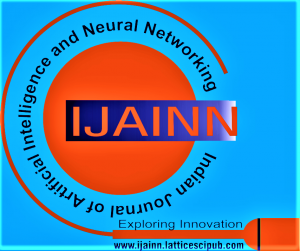![]()
Plagiarism Detection Technique using www and Wordnet
Kamlesh Sharma1, Nidhi Garg2, Arun Pandey3, Daksh Yadav4, Nikhil5
1Dr. Kamlesh Sharma, Associate Professor, Department of Computer Science & Engineering, Manav Rachna International Institute of Research & Studies, Faridabad, India.
2Nidhi Garg, Assistant Professor, Department of Computer Science & Engineering, Manav Rachna International Institute of Research & Studies, Faridabad, India.
3Arun Pandey, Student, Department of Computer Science & Engineering, Manav Rachna International Institute of Research & Studies, Faridabad, India.
4Daksh Yadav, Student, Department of Computer Science & Engineering, Manav Rachna International Institute of Research & Studies, Faridabad, India.
5Nikhil, Student, Department of Computer Science & Engineering, Manav Rachna International Institute of Research & Studies, Faridabad, India.
Manuscript received on 31 March 2021 | Revised Manuscript received on 17 April 2021 | Manuscript Accepted on 15 June 2021 | Manuscript published on 30 June 2021 | PP: 1-6 | Volume-1 Issue-3, June 2021 | Retrieval Number: 100.1/ijainn.B1015021221 | DOI: 10.54105/ijainn.B1015.061321
Open Access | Ethics and Policies | Cite | Mendeley | Indexing and Abstracting
© The Authors. Published by Lattice Science Publication (LSP). This is an open access article under the CC-BY-NC-ND license (http://creativecommons.org/licenses/by-nc-nd/4.0/)
Abstract: Plagiarism is an act of using another person’s words, idea or information without giving credit to that person and presenting them as your own. With the development of the technologies in recent years, the act of Plagiarism increases significantly. But luckily the plagiarism detection techniques are available and they are improving day by day to detect the attempts of plagiarizing the content in education. The software like Turnitin, iThenticate or Safe Assign is available in the markets that are doing a great job in this context. But the problem is not fully solved yet. These software(s) still doesn’t detect the rephrasing of statements of another writer in other words. This paper primarily focuses to detect the plagiarism in the suspicious document based on the meaning and linguistic variation of the content. The techniques used for this context is based on Natural language processing. In this Paper, we present how the semantic analysis and syntactic driven Parsing can be used to detect the plagiarism.
Keywords: Natural Language Processing (NLP), Information Retrieval (IR), Cross-Language Information Retrieval (CLIR), Computational Linguistics, Wordnet, world wide web.
Scope of the Article: Natural Language Processing
